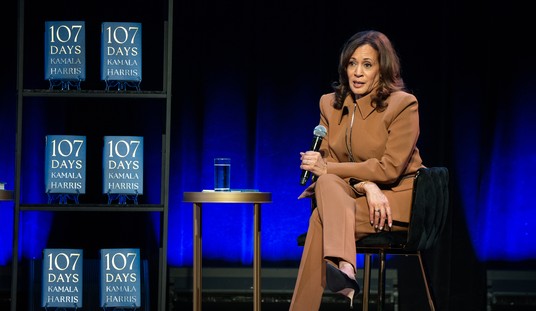A new Quinnipiac University poll released Wednesday shows former Vice President Joe Biden and a number of the other top Democratic presidential candidates within the margin of error with President Donald Trump in the 2020 presidential race in Texas. It’s over a year before the election, and there are fair questions to ask about some details regarding the polling sample, but the results of this poll show some real vulnerabilities for Texas Republicans all down the ballot.
According to Quinnipiac’s polling memo, the poll was conducted by telephone using landline and cell numbers from May 29 through June 4, using live interviewers who spoke English or Spanish according to the respondents’ preference. They spoke to 1,159 self-identified registered voters with a margin of error of +/- 3.4 percent for the overall sample. Additional questions were directed at the 407 Democratic or Democratic leaning voters regarding the Democratic presidential primary. For those questions, the margin of error was +/- 5.8 percent.
When asked about party identification, 34 percent said Republican, 30 percent said Democrat, 25 percent said Independent, and 10 percent said other.
The respondents were asked who they preferred, one at a time, between Trump and various Democrats:
- Former Vice President Joe Biden 48 percent to Trump 44 percent;
- Trump at 46 percent to Massachusetts Sen. Elizabeth Warren at 45 percent;
- Trump at 47 percent to Vermont Sen. Bernie Sanders at 44 percent;
- Trump at 48 percent to former U.S. Rep. Beto O’Rourke with 45 percent;
- Trump with 46 percent to South Bend Mayor Pete Buttigieg’s 44 percent;
- Trump at 47 percent to California Sen. Kamala Harris at 43 percent;
- Trump with 46 percent to former San Antonio Mayor Julian Castro at 43 percent.
Remember, the margin of error for the overall sample is 3.4 percent, so Biden’s 4 point advantage over Trump is just barely above that. The rest of these contests range between 2 and 4 points separating the candidates, leading Quinnipiac to characterize the races as “too-close-to-call,” especially at this early date.
Among the Democratic respondents, 30 percent preferred Biden, 16 percent O’Rourke, 15 percent Sanders, 11 percent Warren, 4 percent each for Harris and Castro, and 3 percent for Buttigieg. No other Democrat received more than 2 percent.
In general, the partisan breakdown of the polling sample is fair for Texas. It would be helpful to see additional information about the precise geographic breakdown of the location of the voters — specifically the urban vs. rural breakdown, a critically important factor in elections in Texas — but in general this is not far off from 2018 when O’Rourke challenged Sen. Ted Cruz for Texas’ Senate seat.
In that race, Democrats watched O’Rourke come tantalizingly close to breaking their long Lone Star State losing streak — a little more than two hundred thousand votes out of over eight million cast separated the candidates (Cruz 50.9 percent to O’Rourke 48.3 percent) — but the race brought national press attention and donor funds pouring into Texas, and that had consequences for down ballot races.
“The longer Democrats can keep saying, ‘Texas is in play,’ the more money is going to get spent here and the more Democrats here that are going to get energized,” said Derek Ryan, an Austin-based political consultant. “While Texas may not go blue in the presidential race, that could spell disaster for several congressional races and many more down further on the ballot.”
In 2018, O’Rourke out-raised Cruz, hauling in about $70.2 million to Cruz’s $40.2 million. A significant portion of that money was spent on get-out-the-vote efforts that benefitted Democrats running for Congressional and state legislative seats.
The Texas Congressional delegation saw two of its Republican members knocked out in 2018: Rep. John Culberson and Rep. Pete Sessions, and Rep. Will Hurd saw the results of his race take days to settle, finally retaining his seat by less than a thousand votes.
In the Texas Legislature, Republicans maintained majority control in both the Senate and House, but saw their numbers diminish, losing State Sens. Konni Burton and Don Huffines, State Reps. Paul Workman and Ron Simmons, and a number of other races nerve-wrackingly close.
“You had numerous Republican congressional and legislative candidates who squeaked by with less than 55% in 2018,” observed Ryan. “There are enough of those races in the Texas House to where if things go really bad, Democrats could take over the House.”
Ryan broke down the 2018 Texas numbers, noting that in 2018 there were six Republicans elected to Congress with less than 52 percent of the vote, and another four who were elected with between 52 percent and 55 percent. In the Texas House, there were nine Republicans elected with less than 52 percent and an additional ten who were elected with between 52 percent and 55 percent. If nine of those swing D in 2020, Democrats take the majority.
One final tidbit from the poll: O’Rourke, who was the Democrats’ great hope in 2018, still has high favorability among Texas Democrats, but they do not want him to be president. An overwhelming 60 percent to 27 percent of the Democrats and Democratic leaners in the poll said they preferred that O’Rourke challenge the Republican incumbent Sen. John Cornyn for his seat in 2020 rather than continue running for president.
Read my RedState article archive here.
Follow Sarah Rumpf on Twitter: @rumpfshaker.














Join the conversation as a VIP Member